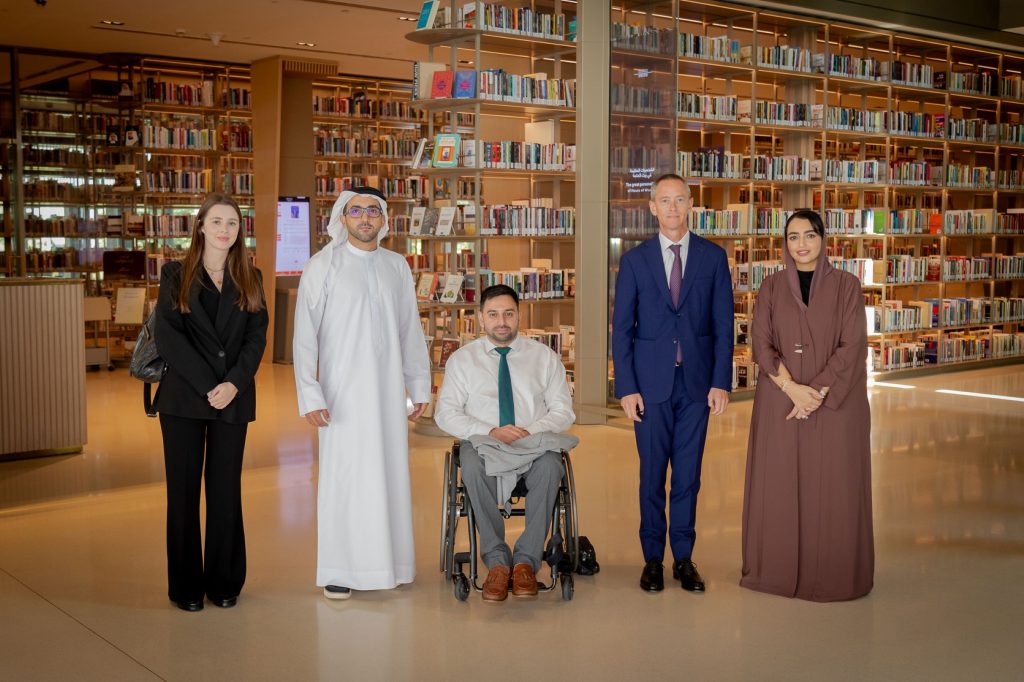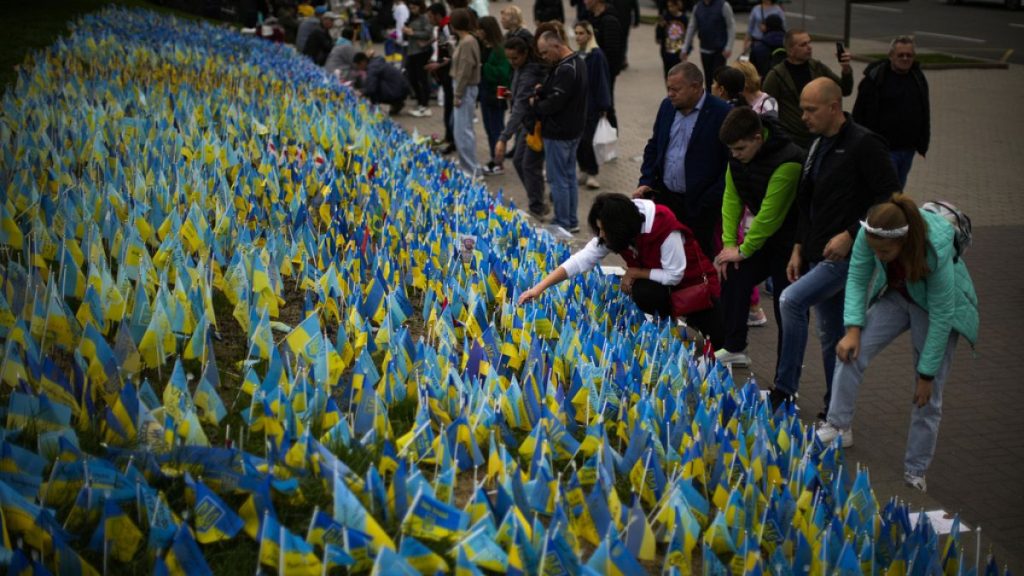L’Observatoire de l’Europe Business investigates how Russia is using Kyrgyzstan as a key third-party country to maintain trade relations with a variety of European nations.
The ongoing Russia-Ukraine war has seen a wave of sanctions being imposed on Russia in the last couple of years by the EU, UK and the US as well as a number of other international players.
However, despite sanctions becoming more numerous and stringent, Russia has continued to find ways to maintain trade with Europe.
The Brookings Institute has used the International Monetary Fund (IMF)’s direction of trade data to map out the last few years’ exports being made by several countries to central Asian countries, which are suspected of being transshipments to Russia.
For this mapping, the Brookings Institute looked at Armenia, Kazakhstan, Kyrgyzstan and Georgia.
Kyrgyzstan in particular, stood out, with a marked surge in global and especially European exports to the country since March 2022, when the Ukraine war was already underway.
How is Russia using Kyrgyzstan to maintain trade relations with Europe?
Kyrgyzstan, a small mountainous and landlocked country in central Asia has recently shot to global fame as its extensive trade partnership with Russia has come under increasing scrutiny.
Robert Khachatryan, the CEO and founder of Freight Right Global Logistics, told L’Observatoire de l’Europe: “Kyrgyzstan has emerged as a critical conduit for Russia to maintain trade with Europe despite ongoing sanctions.
“Kyrgyzstan’s exports to Russia skyrocketed from $393m (€352.8m) in 2021 to more than $1.07bn (€0.96bn) in 2022, indicating a significant uptick in trade activities that facilitate Russia’s circumvention of sanctions.
The country has seen a staggering 953% increase in EU exports, primarily benefiting from its strategic position as a transit point.”
Irina Tsukerman, president of Scarab Rising, a security strategy advisory company, also told L’Observatoire de l’Europe: “One of the most effective ways Russia uses Kyrgyzstan to bypass sanctions and export-import controls are reexports of goods.
The EU and US have imposed sanctions on Russia, which have led to a shift in trade patterns.
“These sanctions have made it more difficult for Russia to access high-tech goods, and have increased the cost of doing business with Russia. Kyrgyzstan is extremely dependent on Russia and has few alternatives for trade. Countries like Kyrgyzstan, Kazakhstan, and Armenia have become hubs for re-exporting goods to Russia. This is because trade within the Eurasian Customs Union (EACU) is not subject to mandatory customs declarations and inspections.
“That also facilitates the flow of Russian goods to Europe. Kyrgyzstan’s re-export of vehicles to Russia has helped Russian consumers access the latest car models, which has limited economic pain and reduced the likelihood of a backlash against Putin.
“Kyrgyzstan’s geographic location makes it a transit point for goods moving between Russia and Europe. This includes utilising rail and road networks that connect these regions.
« Russia invests in infrastructure projects in Kyrgyzstan, such as energy and transport, which can enhance trade capabilities and create a more efficient route for Russian goods to reach Europe. »
Vuk Vuksanovic, of the London School of Economics’ foreign policy think tank, LSE IDEAS, told L’Observatoire de l’Europe: “Kyrgyzstan is emerging as one of the key hubs and nodes of the transhipment of Western goods into Russia. Central Asia is quite a logical route given the region’s strategic geography that places the region in the intersection triangle of Russia, China and wider Europe.
“Kyrgyzstan is one of Russia’s most sincere partners in the region. It is a member of the Russia-led Eurasian Economic Union (EAEU) and Collective Security Treaty Organisation (CSTO). The country is a landlocked country heavily dependent on remittances from Russia, which were disrupted by the Ukraine war. Therefore, it was logical that the country was on the lookout for other opportunities.
“The problem is that if Kyrgyzstan gets sanctioned, a new route will only be discovered. It is also troublesome, how will you sanction everyone willing to do business with Russia as the large majority of the countries around the world never joined the Western sanctions against Russia.
“The biggest problem is that this would not happen if there weren’t still plenty of Western countries, particularly in Europe, who are still willing to trade with Russia and use legal and logistical loopholes to do so.
“This goes both ways, and it involves not just the purchase of Russian commodities and resources by the Europeans but also the sale of technology and dual-use goods. So, while the Europeans talked a lot about European values and unity, many of them still found the Russian market attractive.”
Marius Dubnikovas, economist, and vice president of the Lithuanian Business Confederation, said: « After Russia invaded Ukraine in 2022, the export from Kyrgyzstan to Russia increased three times from average level before the war. The trade is active and probably is related with sanctions and attempts to override them.
« The largest trade are machinery, commodities, electronics and electrical equipment. It seems that there is risk that dual usage products are being exported or re-exported from Europe as well. »
Which other countries are involved in this trade?
The Brookings Institute identified countries like Germany, Poland, Lithuania, Italy, the Czech Republic and Serbia, as some of the countries whose exports to Kyrgyzstan have surged following the Russia-Ukraine war. As such, they could potentially be continuing to do trade with Russia through Kyrgyzstan.
Regarding this, Tsukerman pointed out: “Germany is one of the largest trading partners in the EU for both Russia and Kyrgyzstan. German companies engage in importing goods from Russia, including energy products, machinery, and raw materials.
“Russia is well familiar with the logistics of German-Kyrgyz trade flow and exploits these supply chains to its advantage to get its own products out to Germany. French companies are also heavily involved in investing into Kyrgyzstan’s energy and manufacturing sector, thus also becoming involved in the triangulation with Russia.
“Italy openly trades with Russia and has interests in Kyrgyzstan, particularly in agriculture and textiles. Luxury goods from Italy reach Russia by way of Central Asian countries like Kyrgyzstan, whereas some Russian agricultural products, such as grains, and textiles reach Italy along with Kyrgyz products.
“Dutch companies often participate in logistics and trade facilitation, leveraging Kyrgyzstan’s position for broader access to central Asia and Russia. That continues even as the government of the Netherlands is active in arming Ukraine.
“Poland has increasing trade ties with both Russia and Kyrgyzstan, focusing on various industries, including agriculture and machinery. Thus some of the industrial products from Russia make their way into Poland via Kyrgyzstan, which is ironic given Poland’s growing role in the European economy and recent election-linked farmer dispute with Ukraine over the influx of Ukrainian grain into Poland.
“These countries, among others, utilise Kyrgyzstan’s strategic location to optimise their trade routes and access goods from Russia while navigating the broader EU market.”
Which products are being exported?
There has been a marked increase in exports and trade activity between Russia and Kyrgyzstan in sectors such as technology, vehicles, cosmetics and more. Heavy trade is especially being seen in goods that are now more difficult for Russia to acquire, such as vehicles and tanks.
Michael Ashley Schulman, partner and chief investment officer of Running Point Capital Advisors, told L’Observatoire de l’Europe: “Officially and traditionally, Kyrgyzstan exports scrap copper, cotton yarn, rubberised fabrics, and produce to Russia. More recently, there has been an uptick in cosmetics, clothing, bags and perfumery.
“But the highest concern is probably focused on how Kyrgyzstan helps Russia import sanctioned goods used in Russia’s war against Ukraine and other dual-use items like Chinese and German automobiles, vehicle spare parts, ball-bearings used for tanks and rail-cars, and semiconductors. By some estimates, only 10% of the cars imported into the Kyrgyz Republic stay there.
“Hundreds of EU items have ended up in Russian military equipment. Several countries, like Germany, have seen a marked uptick in the direct sale of certain products to Kyrgyzstan since the war began. Tracking and fining such commerce could help curtail it.”
Coming to what products Russia continues to import to Europe, Tsukerman said: “Russia, on the other hand, is managing its energy exports, primarily oil and gas in various forms, using Kyrgyzstan as an effective trade hub to circumvent sanctions and get the fossil fuels into Europe.
“Another major export from Russia to Europe consists of agricultural products, including grains such as wheat (and even stolen grain from Ukraine), processed foods, beverages, and fertilizers.
“Russia is even managing to push through industrial equipment and machinery, including even vehicles and electronic goods. Kyrgyzstan is also an important transit point for metals and minerals, including both ferrous and non-ferrous metals such as aluminum and copper.
“In fact, EU purchases of Russian metals have actually increased since the start of the war in Ukraine in 2022. Chemicals, too, make their way through Kyrgyzstan and other Central Asian countries, into European markets, including petrochemicals.”
What can the EU do to stop this trade?
The EU has already been heavily criticised for not doing enough to enforce and implement the sanctions against Russia, including preventing it from setting up multiple shell companies in different countries or using third countries to continue evading trade sanctions.
Regarding this, Michael A Witt, professor of international business and strategy at King’s Business School, said: « I think the mechanisms are pretty straightforward. Standard process would be to create a local company in a third country not affected by sanctions and then funnel things through this company (with further intermediaries if needed).
“This could be stopped by making third countries subject to the same sanctions, or threatening them with the prospect. The problem is that geopolitically, you may well shoot yourself in the foot, for several reasons. One is that you would drive that third state more firmly into the opposing camp. Another is that you effectively cede part of the global market to competition from other countries, especially China.
“So in the end, Russia would for the most part still get what it needs, just from a different supplier, and Europe would lose economic power relative to China, a geopolitical rival.
“Obviously, really sensitive stuff you need to make subject to stringent export restrictions- not export at all (F22) or control very closely (ASML). But for stuff like household appliances, whose chips can be repurposed for military purposes, the options are very limited.
“Of course, you can also blacklist individual companies that import things into third countries. But the moment you do that, Russia will just create different companies to do the same.”
Tsukerman said: “The natural first step is to work with EACU to close the loopholes in tariff regulations and excise trade agreements favorable to sanctions circumvention. Central Asian countries are eager to diversify their economies and trade partnerships; building effective transit points for oil, eschewing tariffs, and pushing for increased European investments and trade agreements should be contingent on enforcement of sanctions policies and avoiding the use of internal free trade as a mechanism to facilitate Russia-linked transactions and financial operations.
“Second, European companies involved in sanctions circumvention should be penalised and lose business in Europe. Moreover, there should be increased transparency mechanisms to avoid government agencies implicitly or explicitly facilitating such relationships.
“Active resources should be dedicated to enforcement and arrest of Russian goods flowing into the EU or vehicles moving through Kyrgyzstan. Stricter enforcement on Kyrgyz officials, oligarchs, and corporate insiders should be simultaneously prioritised to make it more difficult for Kyrgyzstan to benefit from advancing illicit relationships and transactions.”
Dubnikovas said: « There are more than 10 different sanction lists, so the main task is to control their efficiency. It seems that it is not enough to control the movement of goods, bet there should be more attention applied on money transfers and beneficiaries. »



